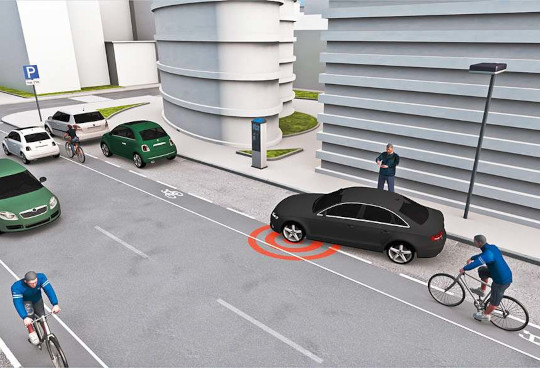How LiDAR can enhance autonomous vehicle safety

The surging demand for autonomous vehicles (AVs) comes as no surprise, driven by the promising advantages they offer, including safer driving, improved traffic efficiency and even cleaner air. Nevertheless, before these vehicles can dominate the roads, engineers face the crucial task of ensuring the reliability of AV technology. To meet the challenge, manufacturers are integrating innovative solutions such as light detection and ranging (LiDAR) systems into AVs, elevating their ability to navigate roads safely. In this blog we’ll cover some of the advantages and challenges associated with LiDAR technology, exploring its potential to pave the way for safer AVs.
The pros of LiDAR systems in AVs
LiDAR is a sensing technology that uses beams of light to measure distances with incredible accuracy—and within AVs, LiDAR is proving to be a powerful piece of the vehicle’s perception and navigation system. An AV equipped with a LiDAR system uses a laser to emit infrared light waves into its environment. These light pulses reflect off objects in its proximity and travel back to the sensor which analyzes the time it takes for the light to return. This information is used to generate a 3D map of points, effectively constructing a detailed field of view that can identify objects within the car’s vicinity.
Having such accurate and rich information of an AVs surroundings is vital for safety. Here are some other ways LiDAR can improve the safety of self-driving vehicles:
- Minimal light dependency: Because LiDAR operates on lasers, it is less dependent on ambient light than optical sensors and cameras. This makes LiDAR a safer choice for driving at night or other low-light situations.
- Collision avoidance: LiDAR’s ability to create 3D maps of surroundings empowers vehicles with advanced warning capabilities, giving them much more time to react to hazardous situations like sudden breaking or pedestrian interference.
- Multi-object tracking: LiDAR enables precise tracking of multiple objects simultaneously. This is essential when it comes to the navigation of highly congested urban areas.
Addressing the issues
While LiDAR holds promise for enhancing the safety and capabilities of AVs, it’s important to recognize that every innovation has its nuances and challenges. Here are some of the cons of LiDAR systems in AVS:
- Cost implications: Although effective, LiDAR technology does not come cheap. These systems can be expensive, impacting the overall cost of manufacturing AVs and thus the cost to the customer.
- Weather-dependent accuracy: One major limitation of LiDAR sensors is their reduced accuracy and performance during adverse weather conditions, particularly in the rain. Raindrops can interfere with the detection of the light beam, leading to misleading reflections and misidentification of objects.
- Temperature sensitivity: LiDAR sensors, like many electrical components, have specific optimal temperature ranges. Extreme weather like heat and humidity, can affect the performance and reliability of the sensor.
Luckily, efforts are underway to mitigate these challenges. Some manufacturers are turning to thermoelectric cooling as a potential solution for the temperature challenge LiDAR sensors face. This type of cooling system uses sensors to detect changes in climate, offering precise temperature control to effectively dissipate heat and respond rapidly to dynamic environmental conditions. By integrating thermoelectric cooling, LiDAR systems can maintain optimal operating temperatures, ensuring reliable and consistent performance.
While addressing the cost and weather-related challenges may require time and ongoing research, the adoption of advanced cooling solutions represents a proactive step towards optimizing the functionality of LiDAR systems in AVs. As the automotive industry continues to innovate, LiDAR technology can make autonomous vehicles a safer and more reliable mode of transportation.
Siemens Digital Industries Software helps organizations of all sizes digitally transform using software, hardware and services from the Siemens Xcelerator business platform. Siemens’ software and the comprehensive digital twin enable companies to optimize their design, engineering and manufacturing processes to turn today’s ideas into the sustainable products of the future. From chips to entire systems, from product to process, across all industries. Siemens Digital Industries Software – Accelerating transformation.
For more information on Siemens Digital Industries Software products and services, follow us on LinkedIn, Twitter, Facebook and Instagram.


